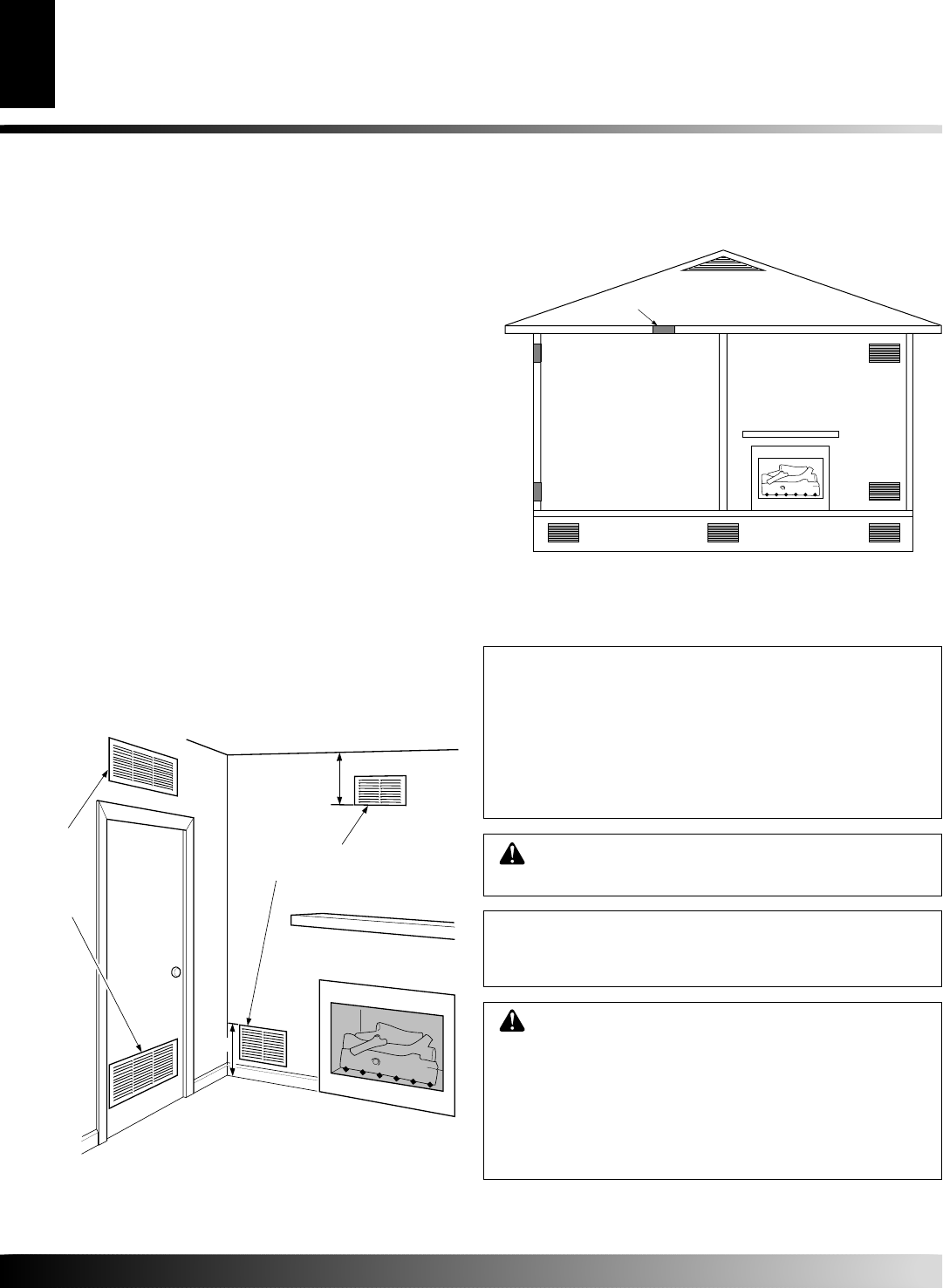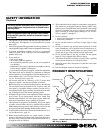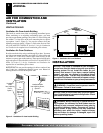
107068-01F
For more information, visit www.desatech.com
For more information, visit www.desatech.com
6
AIR FOR COMBUSTION AND VENTILATION
Ventilation Air
INSTALLATION
AIR FOR COMBUSTION AND
VENTILATION
Continued
VENTILATION AIR
Ventilation Air From Inside Building
This fresh air would come from an adjoining unconfined space.
When ventilating to an adjoining unconfined space, you must
provide two permanent openings: one within 12" of the ceiling and
one within 12" of the floor on the wall connecting the two spaces
(see options 1 and 2, Figure 2). You can also remove door into
adjoining room (see option 3, Figure 2). Follow the National Fuel
Gas Code ANSI Z223.1/NFPA 54, Section 5.3, Air for Combustion
and Ventilation for required size of ventilation grills or ducts.
Ventilation Air From Outdoors
Provide extra fresh air by using ventilation grills or ducts. You must
provide two permanent openings: one within 12" of the ceiling and
one within 12" of the floor. Connect these items directly to the
outdoors or spaces open to the outdoors. These spaces include attics
and crawl spaces. Follow the National Fuel Gas Code ANSI Z223.1/
NFPA 54, Section 5.3, Air for Combustion and Ventilation for
required size of ventilation grills or ducts.
IMPORTANT:
Do not provide openings for inlet or outlet air into
attic if attic has a thermostat-controlled power vent. Heated air
entering the attic will activate the power vent.
Figure 3 - Ventilation Air from Outdoors
Figure 2 - Ventilation Air from Inside Building
Outlet
Air
Ventilated
Attic
Outlet
Air
Inlet
Air
Inlet Air
Ventilated
Crawl Space
To
Crawl
Space
To Attic
Or
Remove
Door into
Adjoining
Room,
Option
3
Ventilation Grills
Into Adjoining Room,
Option 2
Ventilation
Grills
Into Adjoining
Room,
Option 1
12"
12"
INSTALLATION
WARNING: A qualified service person must in-
stall heater. Follow all local codes.
WARNING: Before installing in a solid fuel burn-
ing fireplace, the chimney flue and firebox must be
cleaned of soot, creosote, ashes and loose paint by
a qualified chimney cleaner. Creosote will ignite if
highly heated. A dirty chimney flue may create and
distribute soot within the house. Inspect chimney
flue and firebox for damage. If damaged, repair flue
before operating heater.
NOTICE: State or local codes may only allow opera-
tion of this appliance in a vented configuration. Check
your state or local codes.
NOTICE: This heater is intended for use as supple-
mental heat. Use this heater along with your primary
heating system. Do not install this heater as your
primary heat source. If you have a central heating
system, you may run system’s circulating blower
while using heater. This will help circulate the heat
throughout the house. In the event of a power outage,
you can use this heater as your primary heat source.


















